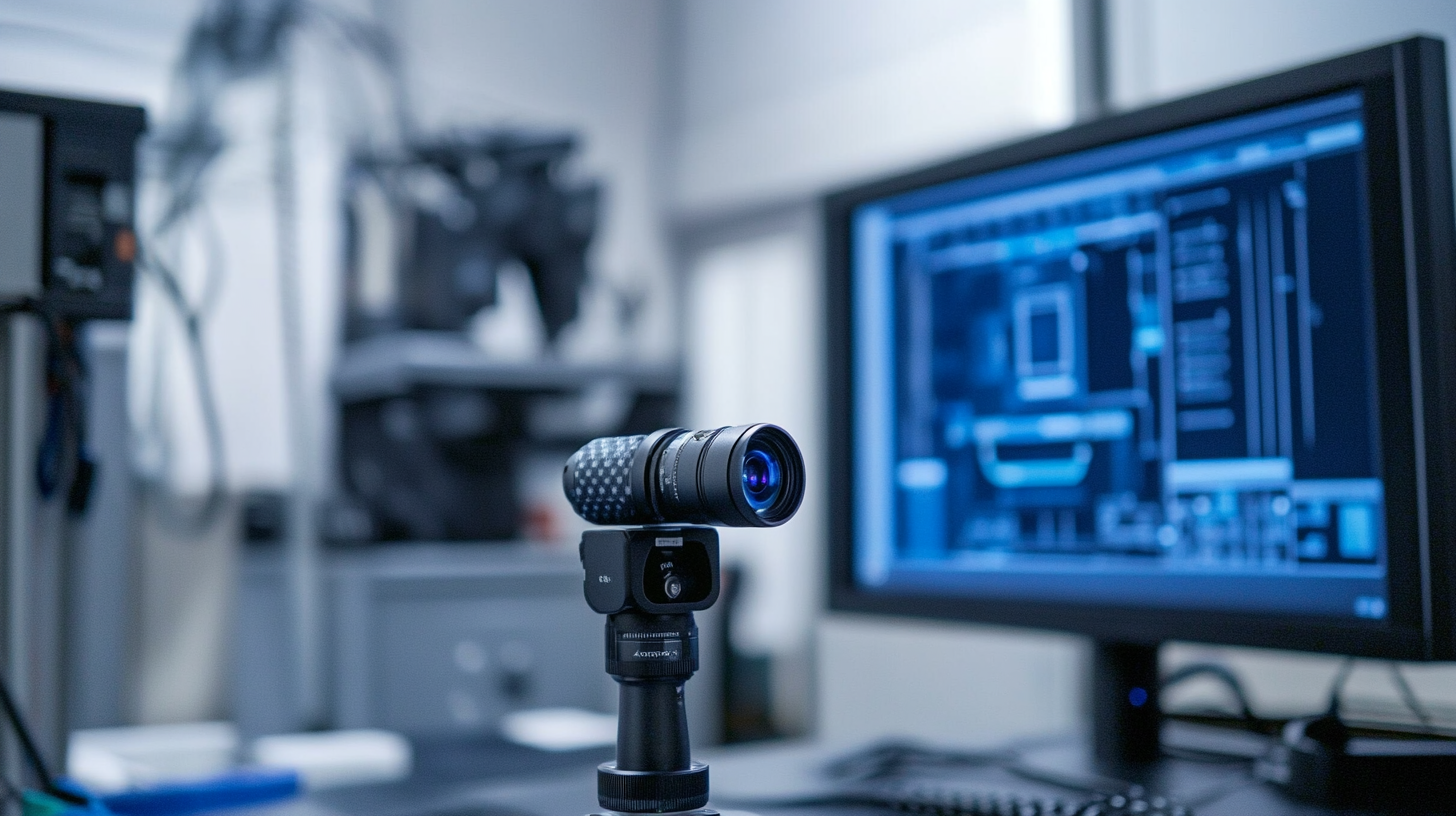Exploring Real World Applications of Video Endoscopes and How They Transform Inspections
In recent years, the healthcare and industrial sectors have witnessed significant advancements, especially in the realm of inspection technologies. Among these innovations, video endoscopes have emerged as powerful tools that revolutionize how inspections are conducted across various domains. These sophisticated devices, equipped with high-resolution cameras, offer unparalleled visibility into areas that are otherwise difficult to access. From diagnosing medical conditions within the human body to examining the intricate details of machinery and infrastructure, video endoscopes are transforming the landscape of inspection practices.
The versatility and effectiveness of video endoscopes have made them indispensable in numerous applications. In the medical field, they facilitate minimally invasive procedures, allowing physicians to visualize and treat ailments with precision. Meanwhile, in industries such as manufacturing, construction, and aviation, these devices play a critical role in ensuring safety and compliance by allowing thorough examinations of equipment and environments. As we explore the real-world applications of video endoscopes, we will uncover how they not only enhance inspection quality but also contribute to significant time and cost savings, ultimately leading to improved outcomes across various sectors.

Real-Life Industries Revolutionized by Video Endoscopes
Video endoscopes are increasingly making their mark across various industries, revolutionizing inspection processes in remarkable ways. In medical fields, for instance, endoscopy plays a crucial role in early cancer diagnosis. Research from the University of Nottingham highlights the development of a novel endoscopic device capable of 3D imaging the stiffness of biological cells. This technology represents a significant leap forward, as it can potentially facilitate the identification of cancerous cells at much earlier stages, thereby increasing the chances of successful treatment.
Another industry benefiting from advancements in video endoscopy is manufacturing. The detailed imagery provided by these devices enables inspectors to examine the interior structures of machinery and components. According to industry reports, using video endoscopes can enhance defect detection rates by up to 40%, leading to substantial cost savings and safety improvements. Industries like aerospace and automotive are particularly gaining from this technology, as it allows for inspections in hard-to-reach areas without disassembly.
Additionally, video endoscopes are finding applications in environmental monitoring. For example, in oil and gas, these tools can be utilized to inspect pipelines for corrosion or blockages without interrupting service. A report by the Global Market Insights estimates that the demand for endoscopic inspection technologies in environmental sectors will grow steadily, further showcasing the transformative power of video endoscopes in enhancing operational efficiency and safety across multiple domains.
Real World Applications of Video Endoscopes
Video endoscopes have transformed various industries by enhancing inspection capabilities and improving operational efficiency. The following pie chart illustrates the distribution of applications across different sectors where video endoscopes are being utilized.
The Technology Behind Video Endoscopes: How They Work
Video endoscopes have emerged as a transformative technology across various industries, providing advanced solutions for inspection and diagnosis. At the core of their functionality lies the sophisticated mechanism that combines optics, illumination, and imaging sensors. Modern video endoscopes utilize high-definition cameras paired with flexible, durable shafts that can navigate through narrow spaces, offering real-time, high-quality visual feedback on what lies within.
According to a report published by Grand View Research, the global medical endoscope market alone is expected to reach approximately $36 billion by 2025, growing at a CAGR of 6.8% from 2019. This robust growth is driven by the increasing demand for minimally invasive procedures, whereby video endoscopes play a pivotal role in diagnostics and surgical interventions. For instance, in gastroenterology, the use of video endoscopy has revolutionized procedures like colonoscopy, reducing patient recovery time and improving outcomes.
Beyond the medical field, industrial applications of video endoscopes are also on the rise. The global industrial endoscope market is projected to witness significant growth, with insights from Market Research Future indicating a CAGR of 7.02% between 2019 and 2024. Industries such as aerospace and manufacturing leverage endoscopes for non-destructive testing (NDT) and inspecting hard-to-reach areas in machinery, thereby enhancing maintenance strategies and operational efficiency. The ability to visualize internal components without disassembly reduces downtime and saves costs, making video endoscopes invaluable in various sectors.
Real World Applications of Video Endoscopes
Comparative Analysis: Video Endoscopes vs. Traditional Inspection Methods
Video endoscopes have revolutionized the field of medical inspections, particularly in gastrointestinal studies, by offering significant advancements over traditional inspection methods. A comparative analysis reveals that techniques like wireless capsule endoscopy (WCE) provide minimally invasive visualization of the gastrointestinal tract, enabling thorough examinations without the discomfort associated with traditional colonoscopy. WCE not only enhances patient experience but has also shown performance metrics comparable to or even exceeding those of conventional methods, as studies highlight its efficacy in detecting gastrointestinal disorders.
Moreover, novel imaging technologies, such as video capsule endoscopy (VCE), have emerged as game changers in diagnostic procedures. For instance, recent advances have demonstrated that VCE can effectively replace traditional methods for conditions previously challenging to assess. Reports indicate that VCE can achieve diagnostic accuracy rates on par with standard colonoscopy, while also reducing patient anxiety due to its non-invasive nature. This shift in inspection methodology underscores the quantifiable benefits of adopting video endoscopes over traditional techniques in clinical settings.
Additionally, the development of automated systems for error detection in laparoscopy training represents the broader trend of integrating technology into medical practices. These automated systems enhance training efficacy by providing immediate feedback, decreasing error rates, and ultimately promoting higher standards in surgical procedures. This evolution reflects a growing recognition of the need for innovation in inspection techniques, paving the way for improved outcomes in patient care.

Case Studies: Successful Implementations of Video Endoscopes
Video endoscopes have revolutionized a variety of inspection processes across multiple industries, showcasing their effectiveness through compelling case studies. For instance, in the aerospace sector, a 2021 report from MarketsandMarkets highlighted that the global market for endoscopic equipment is expected to reach $4.3 billion by 2027, driven largely by advancements in video endoscopy technology. One notable case involved a leading aircraft manufacturer that implemented video endoscopes to inspect engine components for microfractures. This not only reduced inspection time by 30% but also significantly improved the accuracy of defect detection.
Similarly, the automotive industry has seen successful implementations of video endoscopes. A case study presented by BSRIA revealed that a major automotive manufacturer utilized video endoscopy to inspect complex internal structures of engines. By integrating this technology into their maintenance regime, they improved the detection rate of internal wear and tear, ultimately leading to a reduction in unexpected breakdowns by 25%. The ability to visualize components in hard-to-reach areas has enhanced preventive maintenance strategies across the sector.
In the field of plumbing and infrastructure, video endoscopes have also made substantial contributions. A report by IBISWorld noted that the plumbing inspection industry has grown significantly, with video technology playing a critical role. An example is a municipal water agency that adopted video endoscopy to inspect underground pipelines. Using this technology allowed them to identify and address potential blockages more efficiently, resulting in a 40% decrease in emergency maintenance calls over two years. These case studies illustrate the transformative potential of video endoscopes in enhancing operational efficiency and safety across various sectors.
Exploring Real World Applications of Video Endoscopes and How They Transform Inspections
| Case Study | Industry | Application | Benefits |
|---|---|---|---|
| Aerospace Maintenance | Aerospace | Inspection of Engine Components | Reduced Downtime, Enhanced Safety |
| Pipeline Inspections | Oil & Gas | Internal Pipeline Evaluation | Cost Savings, Increased Efficiency |
| Building Inspections | Construction | Structural Integrity Testing | Early Detection of Issues, Improved Compliance |
| Manufacturing Quality Control | Manufacturing | Enhanced Product Quality, Reduction of Defects |
Future Trends: What Lies Ahead for Video Endoscope Technology
The future of video endoscope technology promises to revolutionize inspection processes across various industries. As advancements in imaging technology and miniaturization continue, video endoscopes are expected to become more compact, more powerful, and even more user-friendly. These tools not only enhance the ability to visualize internal structures without invasive procedures but also leverage smart technology, integrating artificial intelligence (AI) and machine learning. This integration can help in real-time analysis, allowing for more efficient decision-making during inspections.
Moreover, the emergence of 4K and 3D imaging capabilities is set to redefine clarity and detail in visual inspections. High-resolution imaging enables technicians to identify issues more accurately, ultimately leading to timely interventions and cost savings for organizations. Additionally, wireless and portable endoscopes will facilitate on-site inspections in remote and difficult-to-navigate areas, expanding the scope of applications from healthcare to industrial maintenance and environmental monitoring.
Furthermore, the development of cloud connectivity is making it possible for inspection data to be stored and analyzed remotely. This not only enhances collaboration among professionals but also allows for advanced analytics and long-term trend monitoring, which are crucial in preventive maintenance and quality assurance. As we look to the future, the capabilities of video endoscopes stand to significantly impact how industries approach maintenance and inspection, fostering both innovation and efficiency.


